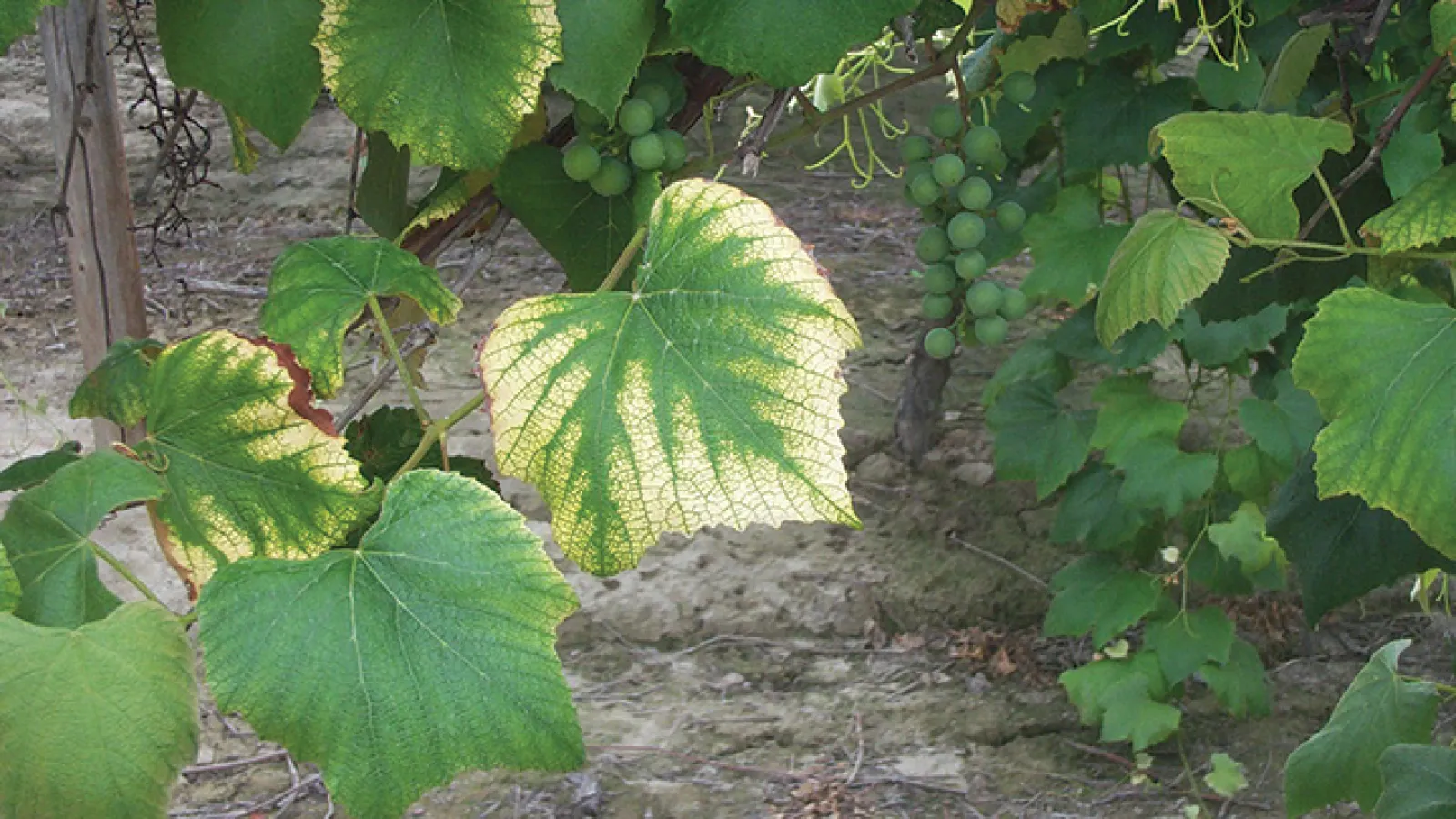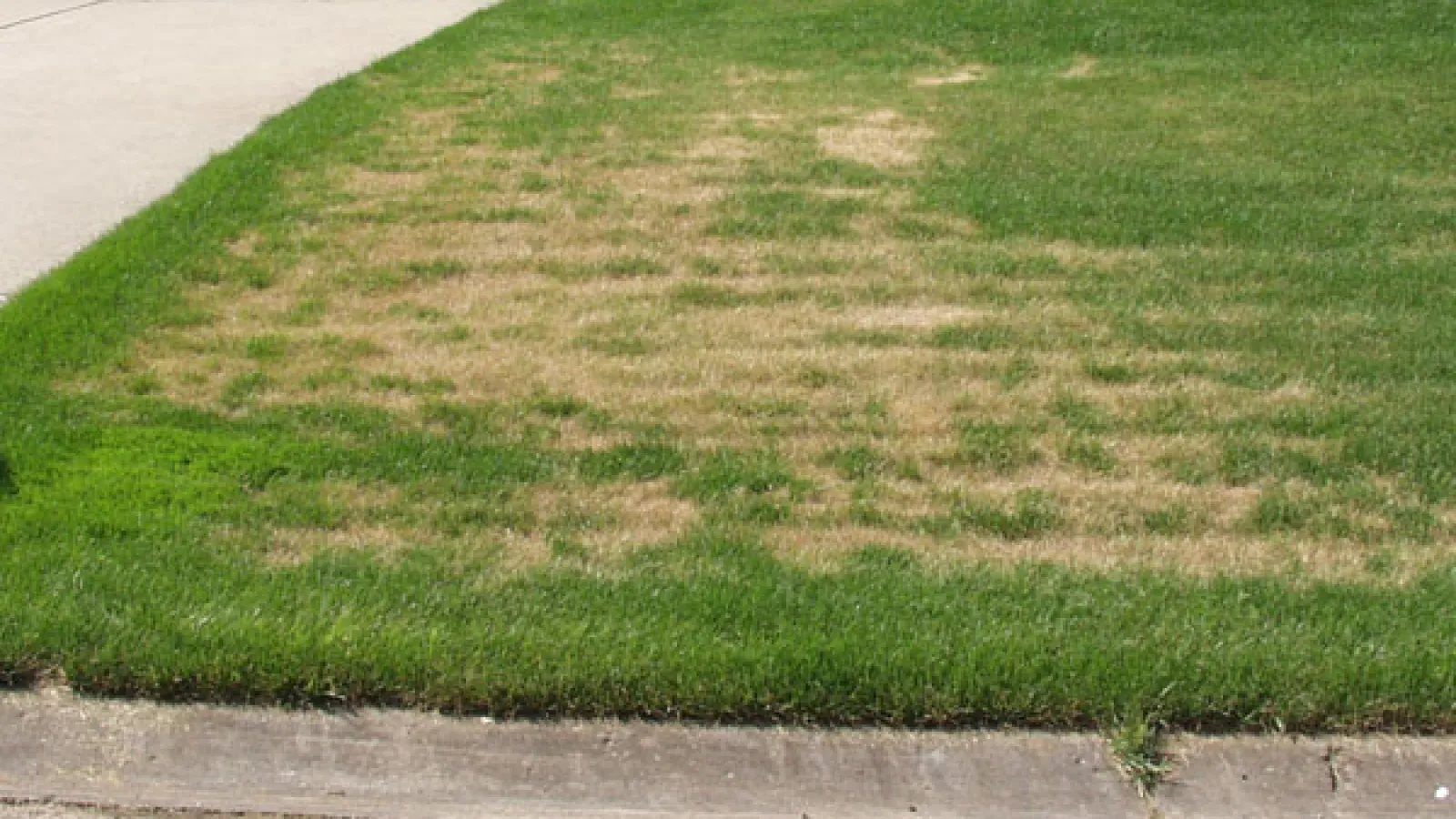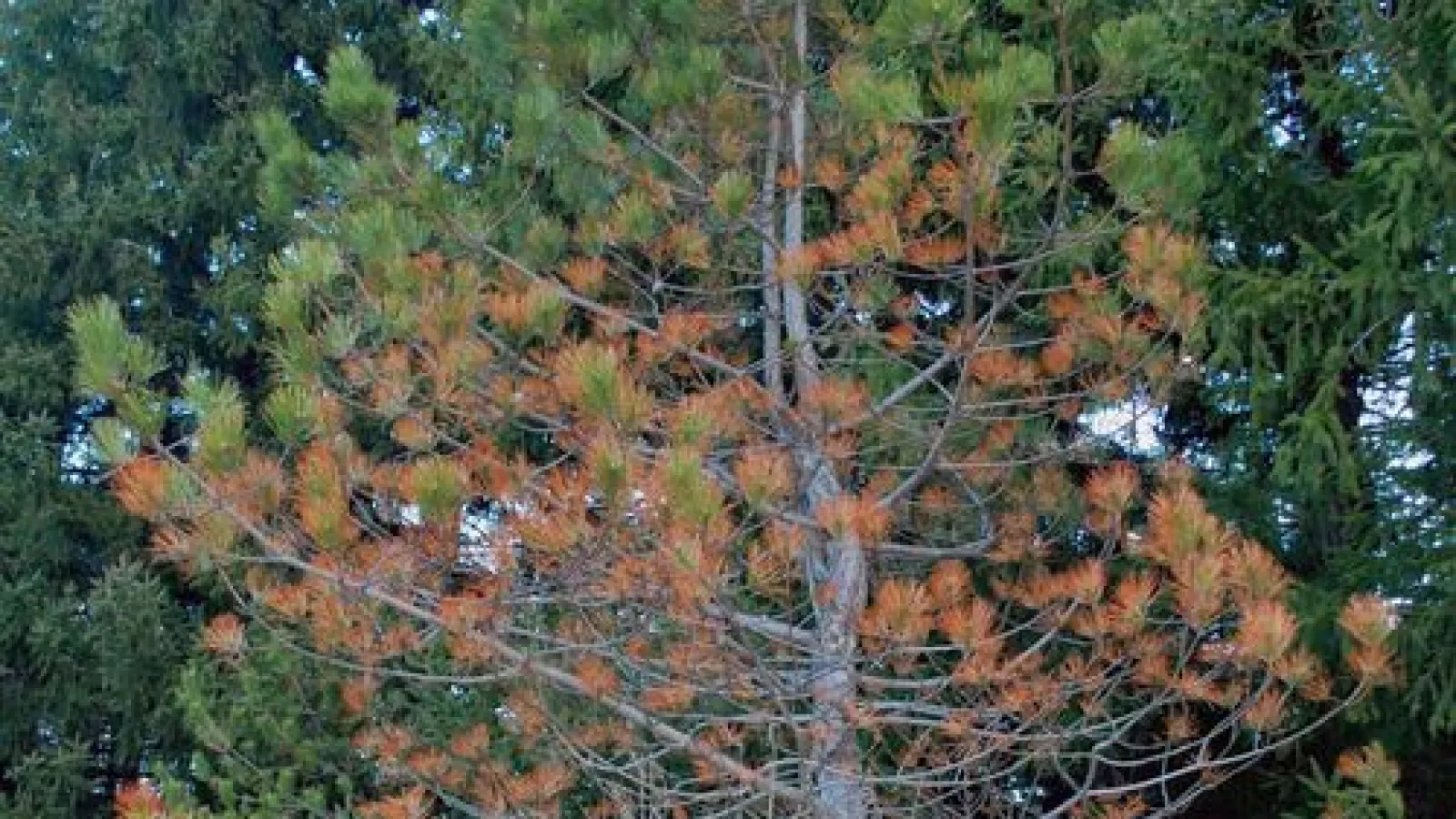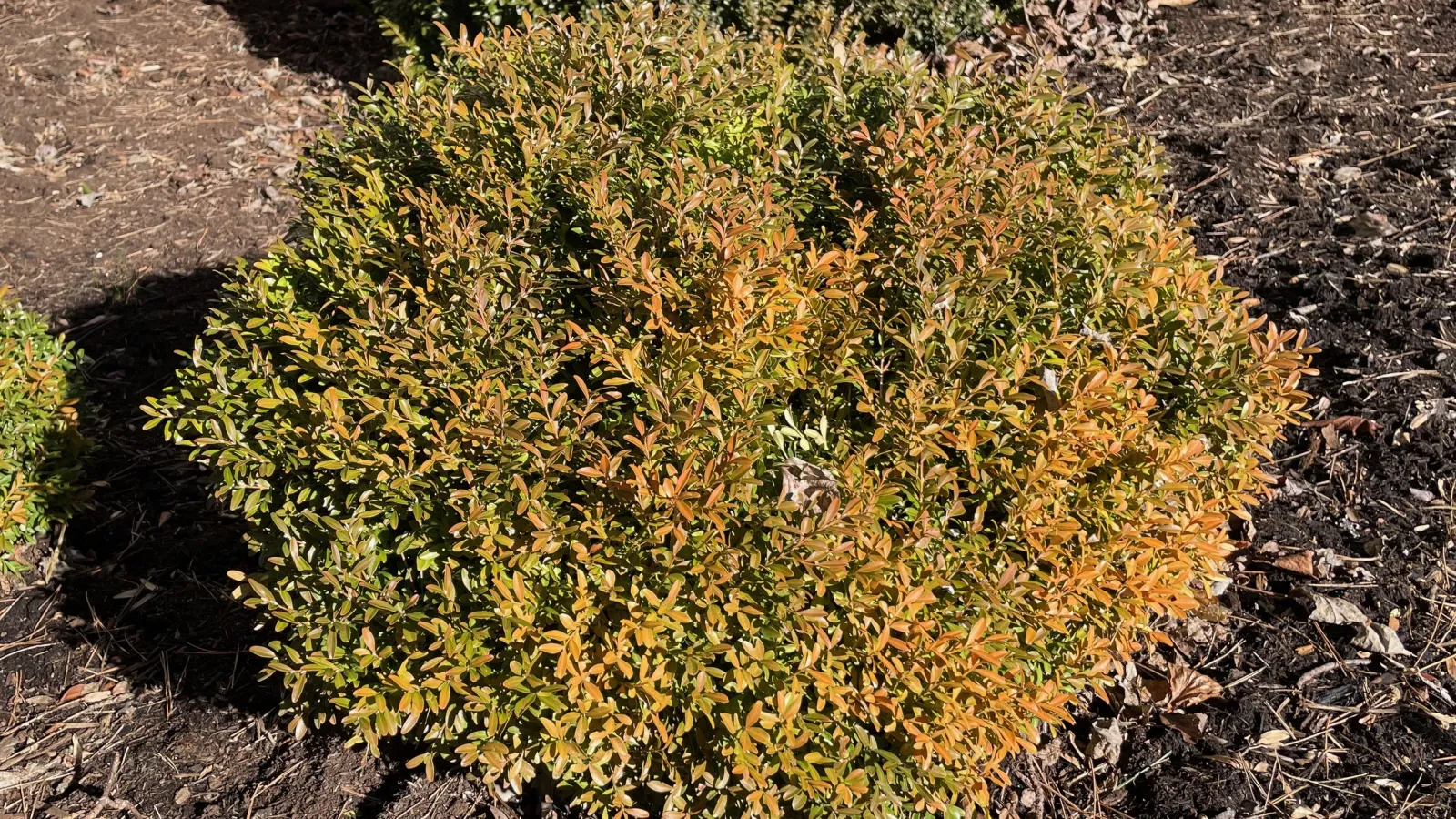Environmental Conditions Library
Common Environmental Conditions
Environmental conditions can cause issues for your lawn, trees, and shrubs. Learn more about what causes these conditions and how you can prevent issues and damage to your landscape.
Chlorosis
- Can affect trees, shrubs, and grass
- Active anytime of the year
Chlorosis is the yellowing of leaf tissue due to a lack of chlorophyll. Possible causes include poor drainage, damaged roots, compacted roots, high alkalinity, and nutrient deficiencies.
- Active anytime of the year
Chlorosis is the yellowing of leaf tissue due to a lack of chlorophyll. Possible causes include poor drainage, damaged roots, compacted roots, high alkalinity, and nutrient deficiencies.
Drought Stress
- Can affect trees, shrubs, and grass
- Occurs in the summer during long periods of hot days with little to no rain or extra irrigation
When drought stress occurs, your grass can thin, become more susceptible to diseases, turn from a beautiful green to brown, and grow slower. Grass can also go into summer dormancy to protect itself. When your trees and shrubs have drought stress, leaves can wilt, discolor and drop.
- Occurs in the summer during long periods of hot days with little to no rain or extra irrigation
When drought stress occurs, your grass can thin, become more susceptible to diseases, turn from a beautiful green to brown, and grow slower. Grass can also go into summer dormancy to protect itself. When your trees and shrubs have drought stress, leaves can wilt, discolor and drop.
Erosion
- Found anywhere with poor drainage
- Can happen any time of the year
Depending on the slope grade, you can try adding plants, mulch, and structures for erosion control. Soaker hoses or drip systems are great ways to efficiently water plant roots without saturating surrounding areas.
- Can happen any time of the year
Depending on the slope grade, you can try adding plants, mulch, and structures for erosion control. Soaker hoses or drip systems are great ways to efficiently water plant roots without saturating surrounding areas.
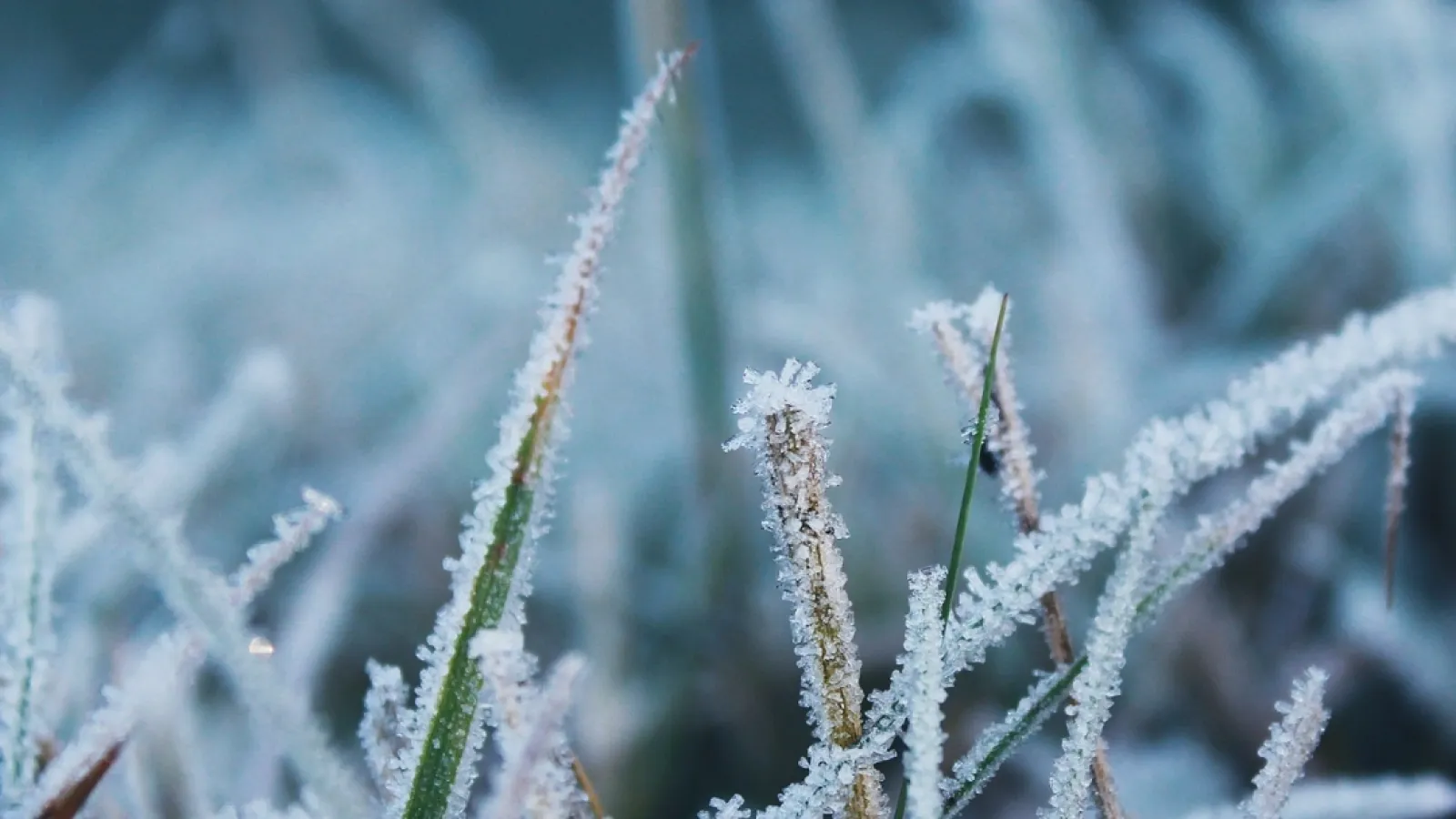
Frost
- Occurs in winter
Frost can harm grass and plants by triggering the increased release of water through plant pores—this is called transpiration. The moisture coats the plant during cold nights, and the moisture freezes, forming frost. Internally, the water molecules naturally expand in the freezing process and the plant cells are damaged as the moisture ruptures cell walls.
Frost can harm grass and plants by triggering the increased release of water through plant pores—this is called transpiration. The moisture coats the plant during cold nights, and the moisture freezes, forming frost. Internally, the water molecules naturally expand in the freezing process and the plant cells are damaged as the moisture ruptures cell walls.
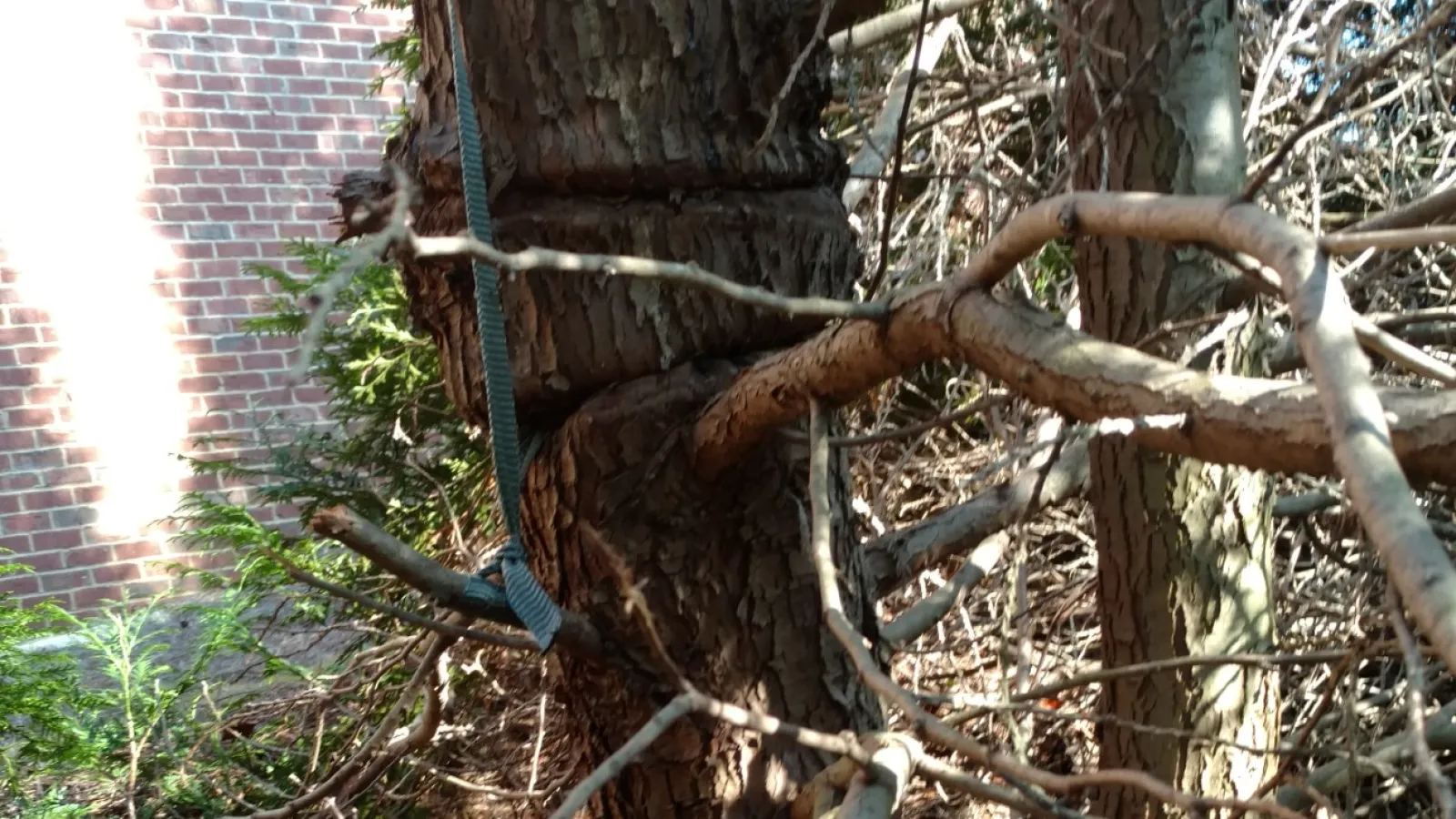
Girdled Trunk
- Found on trees and shrubs
- Girdling can occur any time of the year
Most girdling happens when a stake tie becomes too tight. It also occurs when small rodents chew on the tree bark. The result of girdling is disfiguring scars on the trunk, and in the most extreme situations, death of the tree by "strangulation."
- Girdling can occur any time of the year
Most girdling happens when a stake tie becomes too tight. It also occurs when small rodents chew on the tree bark. The result of girdling is disfiguring scars on the trunk, and in the most extreme situations, death of the tree by "strangulation."
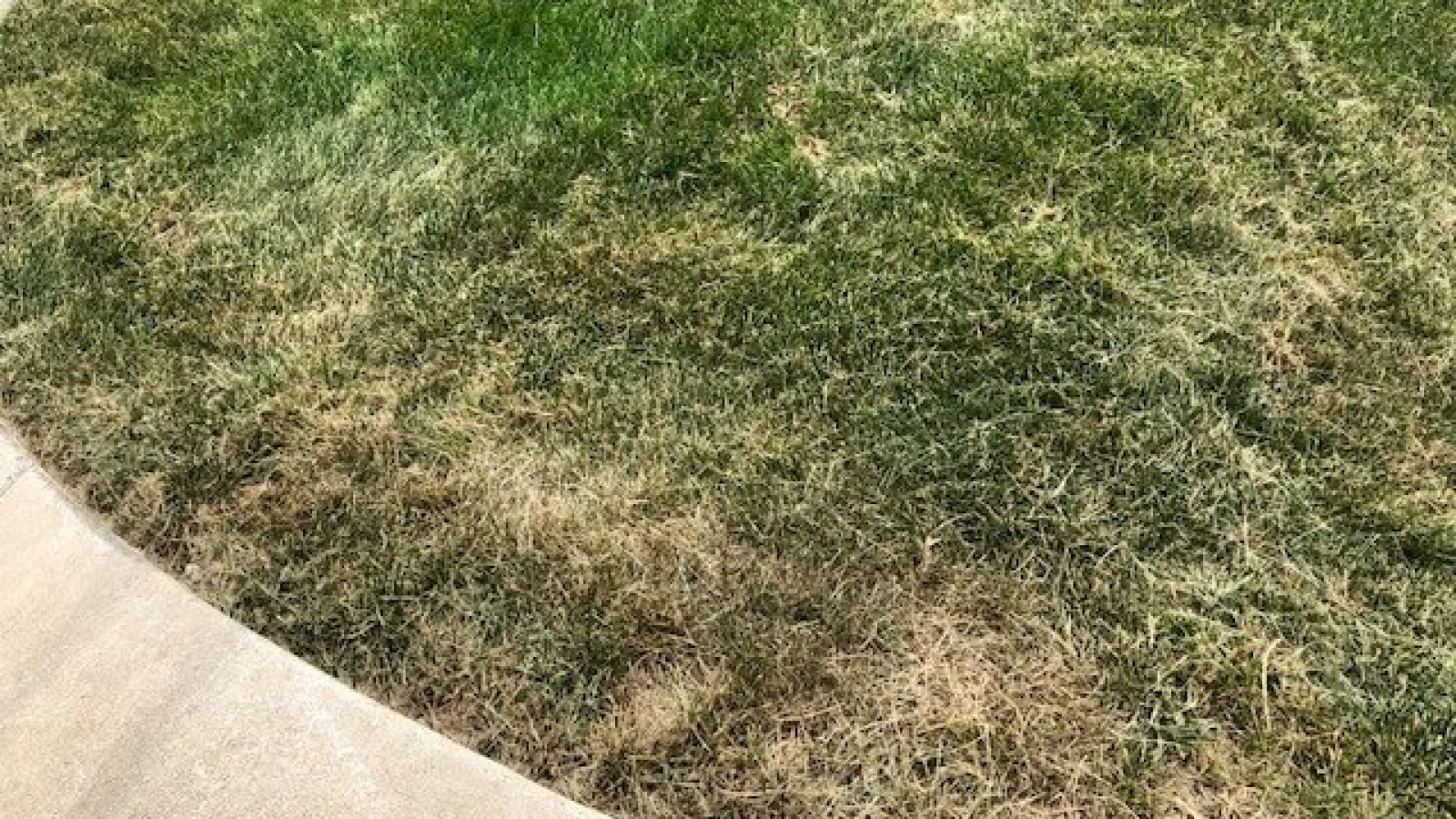
Heat Stress
- Heat stress can affect trees, shrubs, and grass
- Occurs in the summer
Heat stress can cause patches and thin spots in the grass, wilting of the grass blade, and discoloration of the lawn. Heat stress can cause tree and shrub leaves to wilt, discolor and drop.
- Occurs in the summer
Heat stress can cause patches and thin spots in the grass, wilting of the grass blade, and discoloration of the lawn. Heat stress can cause tree and shrub leaves to wilt, discolor and drop.
Needle Shedding
- Found on evergreens such as Eastern white pines
- Occurs in the fall
Instead of dropping leaves every year like maple or oak trees, pin trees go through their needle shedding only every 2-5 years, depending on the tree species.
- Occurs in the fall
Instead of dropping leaves every year like maple or oak trees, pin trees go through their needle shedding only every 2-5 years, depending on the tree species.
Winter Bronzing
- Found on boxwoods and evergreens
- Active in late winter
Winter bronzing is when the plant leaves lose chlorophyll due to cold wind, full sun, and lower temperatures. Therefore turning the plant a bronze color. The more stressed a plant is, the more serious the winter bronzing can be. But the good news is the condition is only temporary. When temperatures rise, the leaves will return to a normal green color and new growth will start.
- Active in late winter
Winter bronzing is when the plant leaves lose chlorophyll due to cold wind, full sun, and lower temperatures. Therefore turning the plant a bronze color. The more stressed a plant is, the more serious the winter bronzing can be. But the good news is the condition is only temporary. When temperatures rise, the leaves will return to a normal green color and new growth will start.
